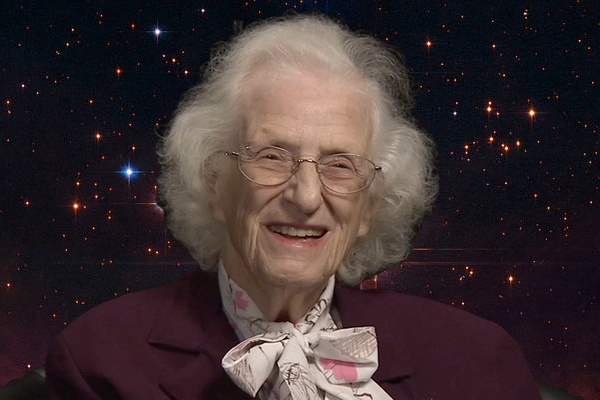The Woman Behind the Creation of the Hubble Space Telescope

2015 marks the 25th anniversary of the Hubble Space Telescope. Launched from Kennedy Space Center in Florida on April 24, 1990 and transmitting its first image on May 20 the same year, Hubble has changed the way astronomers perceive the universe. The data it has collected has been the basis for over 10,000 scientific articles, and the images it takes have been found on wall prints, desktop backgrounds and other products countless times. The idea of a telescope the size of Hubble began in 1946 with astrophysicist Lyman Spitzer, but it took nearly 50 years for Spitzer’s idea to go from paper to the cultural and scientific icon that is the Hubble. It wasn’t until the 1960’s and 1970’s that the idea gained traction in the scientific community. In the late 70’s the United States Congress was finally convinced to fund the project. In the 80’s there were myriad technological issues and redesigns. Finally the telescope was launched in 1990, but that still wasn’t the major milestone. It came with a design flaw in the lenses. Not until 1993 did the telescope work properly. But when it did – wow.
Vital to the creation of the telescope was Dr. Nancy Roman, sometimes called the “mother of Hubble.” Roman was one of few women working at NASA at the time, and she was the chief of the Astronomy and Relativity Programs for the space agency until her retirement in 1979. Born in 1925, Roman had a strong fascination with the stars, forming an astronomy club with neighborhood friends, and battled stereotypes about women throughout her education, eventually earning a doctorate in astronomy from the University of Chicago in 1949. NASA was formed July 28, 1958 and while working for the Navy Research Laboratory, Roman was offered a job at NASA as the program director for the agency’s astronomy program in 1959.
As the first chief of the Astronomy and Relativity program for NASA, Roman was responsible for laying the groundwork in space-based astronomy, as well as convincing astronomers to support the idea of an orbiting telescope, rather than a terrestrial one. Slowly but surely, Roman was able to build support for NASA’s astronomy program, and she served as Chief Scientist on the agency’s Orbiting Astronomical Observatory (OAO) program in the late 1960’s. The OAO’s that were launched provided Roman and NASA with valuable information on what it would take to successfully operate a telescope in space. At this stage in her career, Roman was responsible for launching Ultraviolet and X-Ray based satellites into space, making advances in science and broadening the appeal of space astronomy.
In 1962, at a meeting hosted by the National Academy of Sciences, the concept of a telescope with a large three meter lens was proposed. Roman initially opposed the idea, arguing that technology hadn’t advanced to the point that it would be feasible, and instead opted to focus on the OAO projects already on the boards. By 1965 engineers and aerospace companies began proposing designs for a manned space telescope without input from astronomers. Lyman Spitzer’s idea of a orbital space telescope had gained traction, but it would be Roman who carried it out. With the aerospace industry turning out designs deemed unacceptable by astronomers and NASA employees designing goals for a space telescope, Roman bridged the gap between the two groups. In her own words, she decided to organize a joint committee of engineers and scientists to develop a schematic that would “satisfy astronomers’ requirements and still meet the feasibility concerns of the engineers.” After overseeing the programs to determine if the Hubble would actually work and designing the device, Roman also assisted in lobbying Congress by providing written testimony and meeting with congressional staff to secure the funds needed to make the telescope a reality.
Eventually Roman left NASA in 1979 to work with contractors at Goddard Space Center. Today, Nancy Roman lives in Bethesda, Maryland and still attends lectures, as well as spending her time motivating young women to pursue education in the sciences. Without her initiative, determination and leadership, it is doubtful that the Hubble could have become reality.
Sources
http://www.voanews.com/content/mother-of-hubble-always-aimed-for-stars--127751383/163252.html
http://hubblesite.org/the_telescope/hubble_essentials/quick_facts.php
http://www.aip.org/history/ohilist/4846.html
Hubbles Legacy: Reflections by Those Who Dreamed it, Built it and Observed the Universe with it. Ed. Roger Launius and David DeVorkin